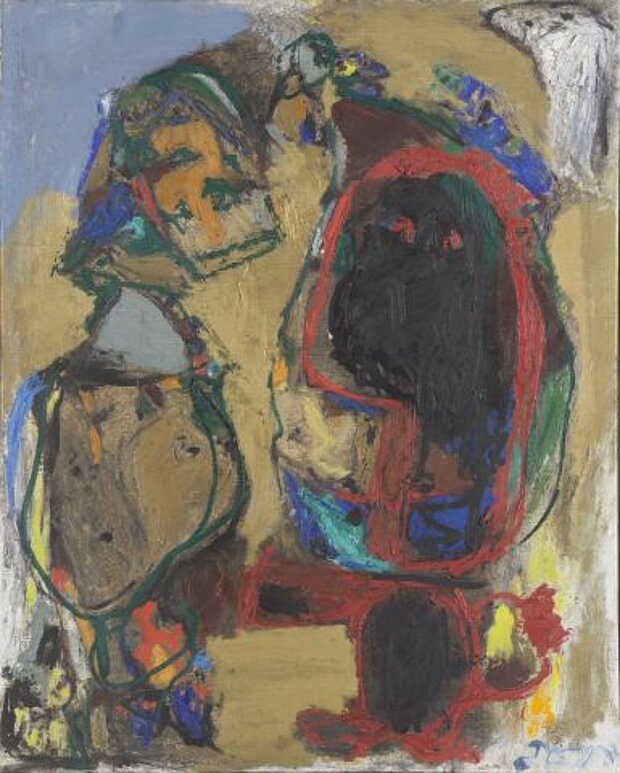
Jorn, Asger
Bevölkerter Felsen
Inhabited Rock
Populated Rock
1956

© mumok
| Object description | Oil on canvas |
|---|---|
| Object category | painting |
| Material |
object:
oil paint
image carrier:
canvas
|
| Technique |
object:
oil paintings
|
| Dimensions |
frame dimension:
height: 93 cm,
width: 77 cm,
depth: 5 cm
object size:
height: 81 cm,
width: 65 cm,
depth: 2,3 cm
|
| Year of acquisition | 1963 |
| Inventory number | B 87/0 |
| Creditline | mumok - Museum moderner Kunst Stiftung Ludwig Wien |
| Rights reference | Bildrecht, Wien |
| Further information about the person | Jorn, Asger [GND] |
| Literature | Paris 1945-1965. Metropole der Kunst. Jahrzehnte des Aufbruchs. Malerei-Plastik-Grafik-Fotografie |
Danish artist Asger Jorn painted “Inhabited Rock” in 1956. The figures here look like they have been painted by a child. With its simplified outlines, distorted proportions, and pastose brushwork, this painting is far from any academically “correct” style. In this period, Asger Jorn was exploring naive and childlike techniques, elements of popular art, and prehistorical cave painting. Figures like those on this painting can be found in Nordic bronze-age drawings on stone. Jorn gives us no idea what the two figures are doing or planning to do—any communication or action is left to our own interpretation. Is this a portrait of two people or is it a symbolic representation of something completely different? For Jorn, this openness is what art has to offer. He radically rejects traditional bourgeois and academic notions of art, wishing to find a new role for art in society. Art should not be abused as propaganda—to manipulate the population, as it was during World War II, for example. It should speak to us spontaneously and directly. Jorn said: “Popular art does not mean singing for the people, but making the people sing.” Asger Jorn was a founder member of the COBRA artists’ group and the Situationist Internationale. He organized artists’ congresses and was a politically active Marxist. In 1956, when this work was painted, Europe was undergoing a number of crises. Jorn was living in Paris, and he took a keen interest in the Algerian War of Independence and the liberation of Morocco and Tunisia. This was also the year of the Poznan revolt in Poland, the Hungarian uprising, and also massive workers’ strikes for better social conditions in Spain. Asger Jorn took a stance as an artist, adhering to a faith in the revolutionary power of art and an experimental approach: “I create, I think and I speak.” So he said.
© mumok – museum moderner kunst stiftung ludwig wien